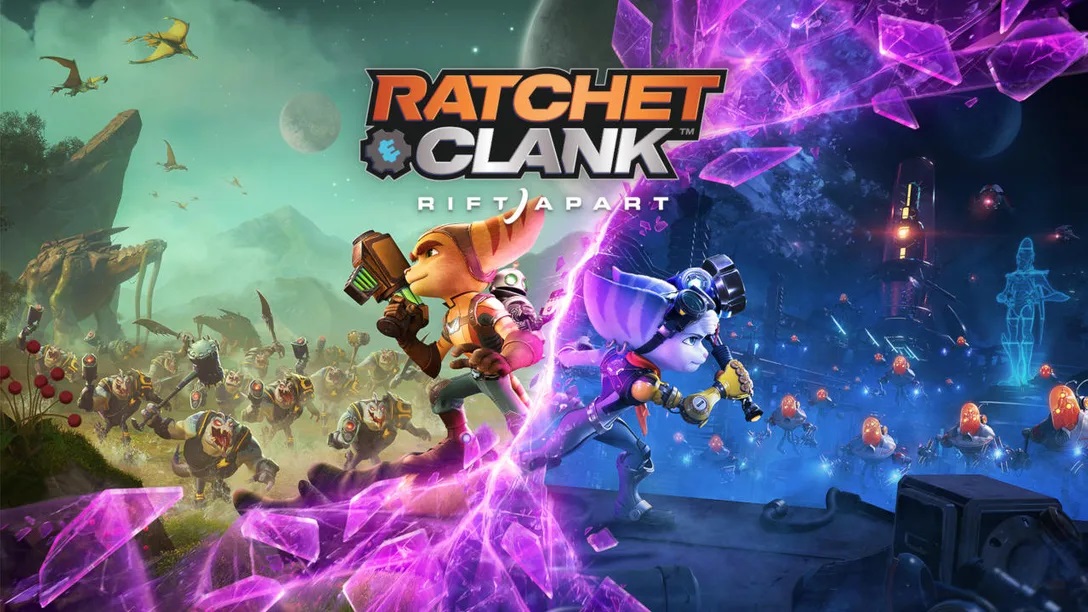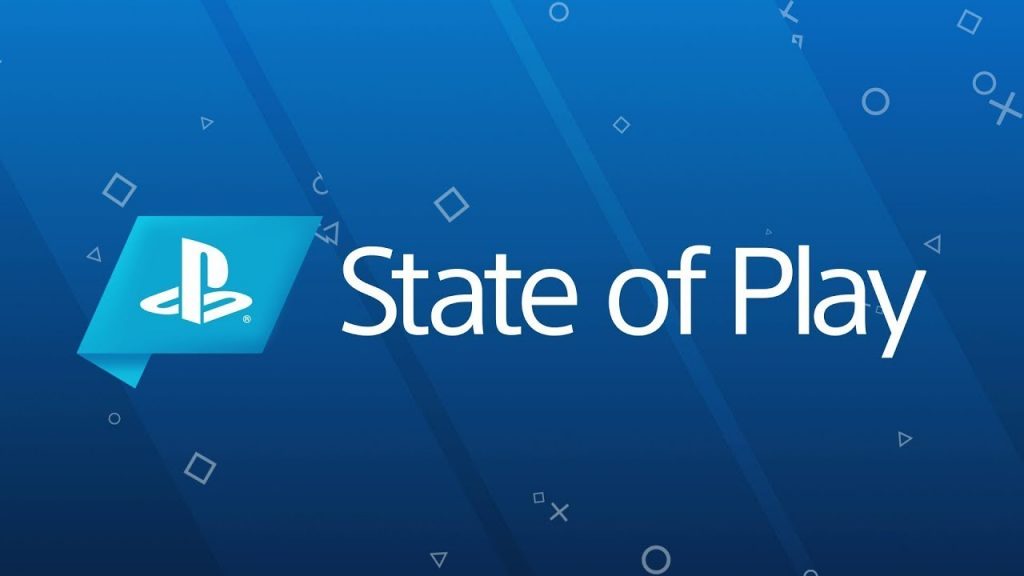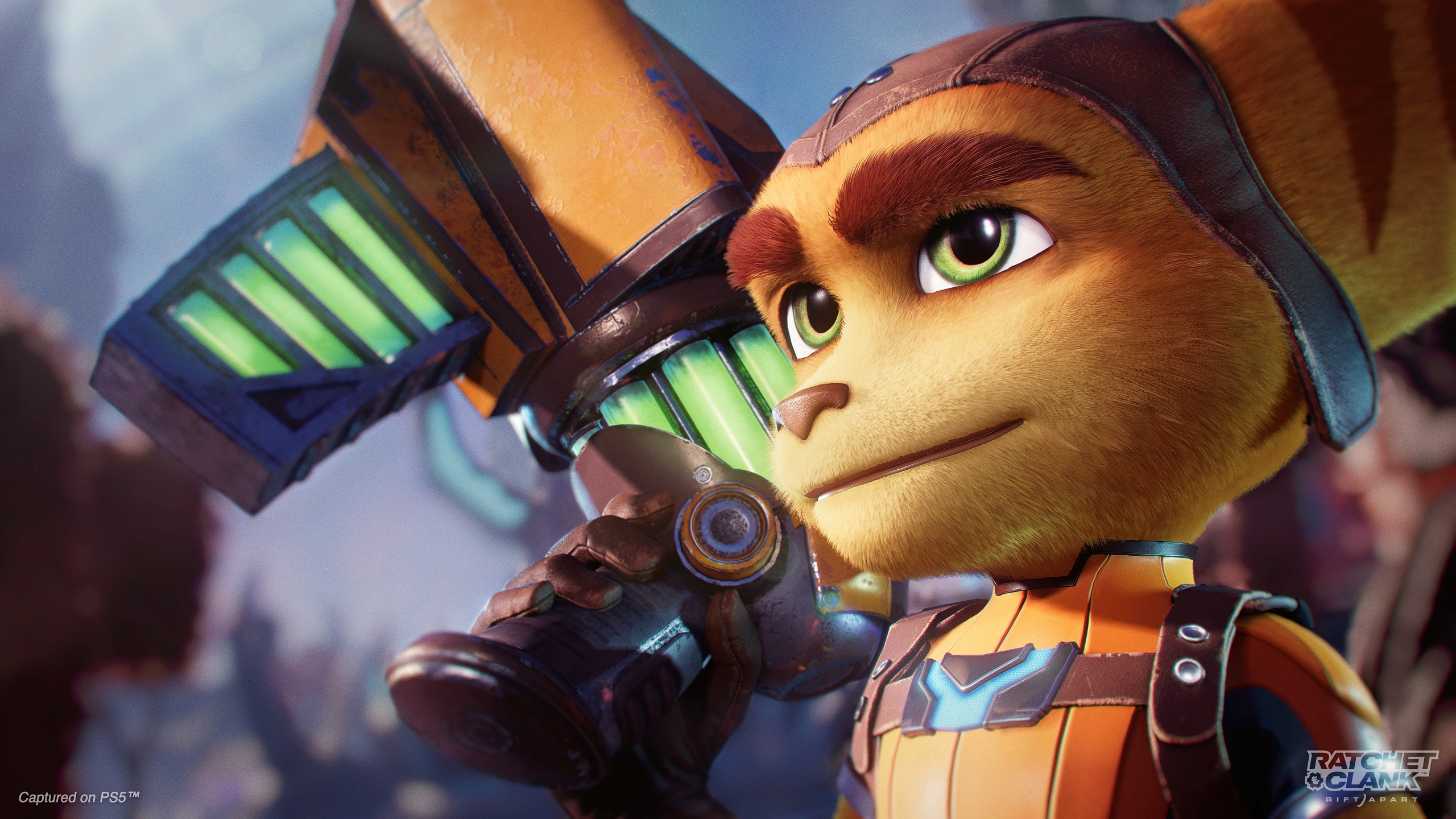
I was a relatively late convert to the Ratchet & Clank series. After missing the entire PlayStation 2 generation of games from the series, the first game I played was Tools of Destruction after I got it as a pack in when buying a PlayStation 3. I quickly fell in love with the lovable Lombax and his robot companion, and have played just about every game in the franchise since that point. It’s been a long time since the last release in the series, with 2016’s quasi reboot/remake of the original Ratchet & Clank, but the wait has definitely been worth it here. Ratchet & Clank Rift Apart is nothing short of fantastic, arguably being the PlayStation 5’s best game so far and the best game in the franchise as well.
Ratchet & Clank: Rift Apart centres around the Dimensionator, a weapon that is capable of opening rifts to other dimensions and should be recognisable to series stalwarts. Clank, wanting to provide Ratchet with the means to move between dimensions and find the rest of his people (who were previously confirmed to have fled to a singular alternate dimension), has built a new version of the Dimensionator, after the original was destroyed in a previous game. As might be expected, the Dimensionator is immediately stolen by antagonist Dr Nefarious, who uses it to find an alternate dimension where his counterpart has been successful in winning against his enemies, as opposed to the constant failure he himself has faced. This is where Rivet, another solo Lombax, comes to the fore, as her dimension has been subjugated by Emperor Nefarious and his army of killer robots. There are plenty of other alternate dimension characters that get introduced as well, allowing for a galaxy that feels familiar, while also introducing a feeling of freshness.
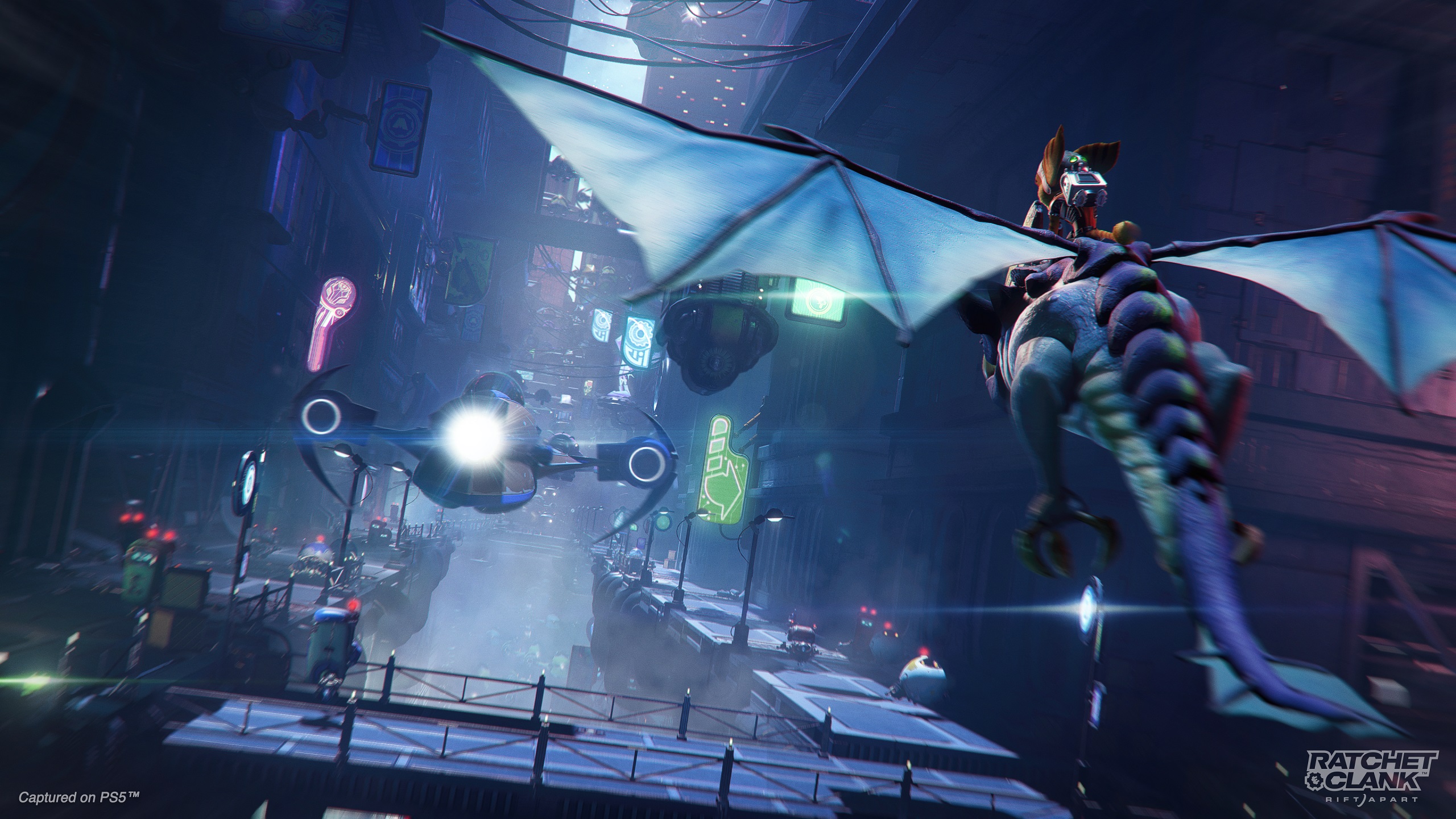
Where the story really hits home, however, is in its writing and characters. Much like past games in the series, Rift Apart isn’t afraid of showing its character’s flaws. Whether it’s Kit dealing with her own self-loathing and fear, Ratchet dealing with his anxiety of meeting other Lombax or Rivet trying to come to grips to opening up to those around her, the game’s characters feel human and relatable. This is backed up by some excellent dialogue and cutscene direction, with the game’s more emotional moments given an appropriate weight, while jokes and lighter moments are thrown in at appropriate times and hit well. While the story doesn’t have many twists and turns, it goes to some places that I didn’t expect and came away appreciating. Everything combined got me extremely invested in the characters and story of the game, and made me relish jumping back in to each play session as I made my way through it.
Where Rift Apart feels the most recognisable is in its gameplay. The game plays in a third person perspective, mixing platforming, exploration and third person shooter combat. Combat itself feels quite similar to past Ratchet & Clank games. You’ll have a large number of enemies thrown at you at any given point that you’ll need to wipe out before being able to trigger the next stage of story or level progression. With a range of zany weapons at your disposal, combat always feels fun and interesting, but some of the battles do feel like they last a little too long and some enemies, especially late game, begin to feel like bullet sponges. The same large, mini-boss style enemies are also repeated throughout the course of the game, which was a little disappointing.
Where the game differs from the past is in its new mobility options, which help to augment platforming, traversal and combat. There’s the rift tether, which allows you to pull yourself towards rifts in the landscape, which allows you to shift to otherwise unreachable locations or behind enemies; a new phase dash, which lets you shift through enemy attacks or get a little more distance on your jumps; and my personal favourite, new rocket boots that allow you to hover just off the ground and quickly travel across the game’s more open environments, among other abilities as well. These help augment combat, with the dash in particular being incredibly useful, and are also extensively used in the world itself, helping to shape the level design. With so many different traversal abilities, each world felt unique and interesting, and typically introduced and focused on a new mechanic. It meant that each world felt fresh and different from the last, which aided in motivating me to explore them.
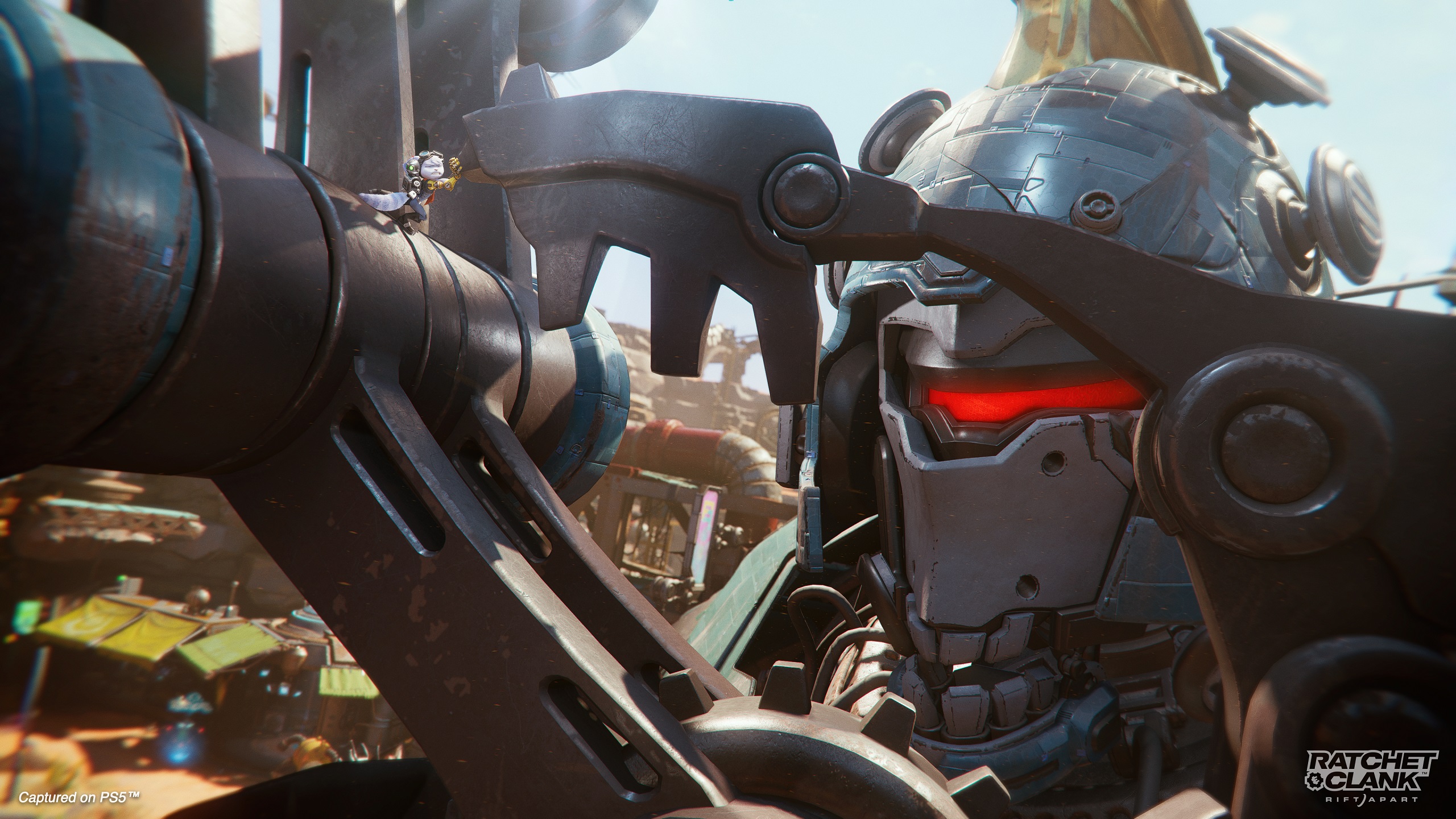
Rift Apart’s world design and uniqueness goes beyond just their traversal mechanics, with unique biomes and styles that also help set them apart. There’s Sargasso, a lush planet filled with greenery and poisonous waters; Corson V, a heavily urbanised plant filled with metal construction and neon lights; Cordelion, an artic planet where much of your time is spend in an underground facility; and many more. Each planet also has a set character to play as, with you shifting between Rivet and Ratchet depending on the location you’re in. Every planet is filled with collectibles to find, with armour pieces (which provide stat buffs), spybots, golden bolts and raritatium (used to unlock weapon upgrades) hidden all over the place. Such was the benefit and enjoyment I had from exploring and finding these collectibles, that I put in the time to find every single one of them and I can confirm that it was definitely worthwhile.
What maybe sets this game apart from most other games is how darn good it looks. The level of detail afforded to the game’s environments and characters is second to none, with details like the fur on Ratchet and Rivet’s ears being an easily noticeable highlight. Raytracing also vastly improves the lighting and reflections in the game, which are arguably the best I’ve seen yet on a console. These are all complemented by some absolutely incredible animation work. Movements seem to flow perfectly into each other and look completely lifelike and realistic. If this is what being a current-generation exclusive means for games, than I am all about seeing more of this.
As with any game, Rift Apart isn’t without its foibles. I had numerous instances of instance death when I hit platforms (which were a couple of meters above traversable land) at just the right location, almost like I triggered a character reset. I also had more than one instance where landing in between rocks caused my character to float indefinitely, as I swivelled my analogue stick frantically until the game decided I hit just the right spot to cancel the animation. There were also instances of weapon audio playing indefinitely after getting hit while firing. None of those issues were gamebreakers by any stretch of the imagination, but did add little frustrations that sometimes reared their ugly heads.
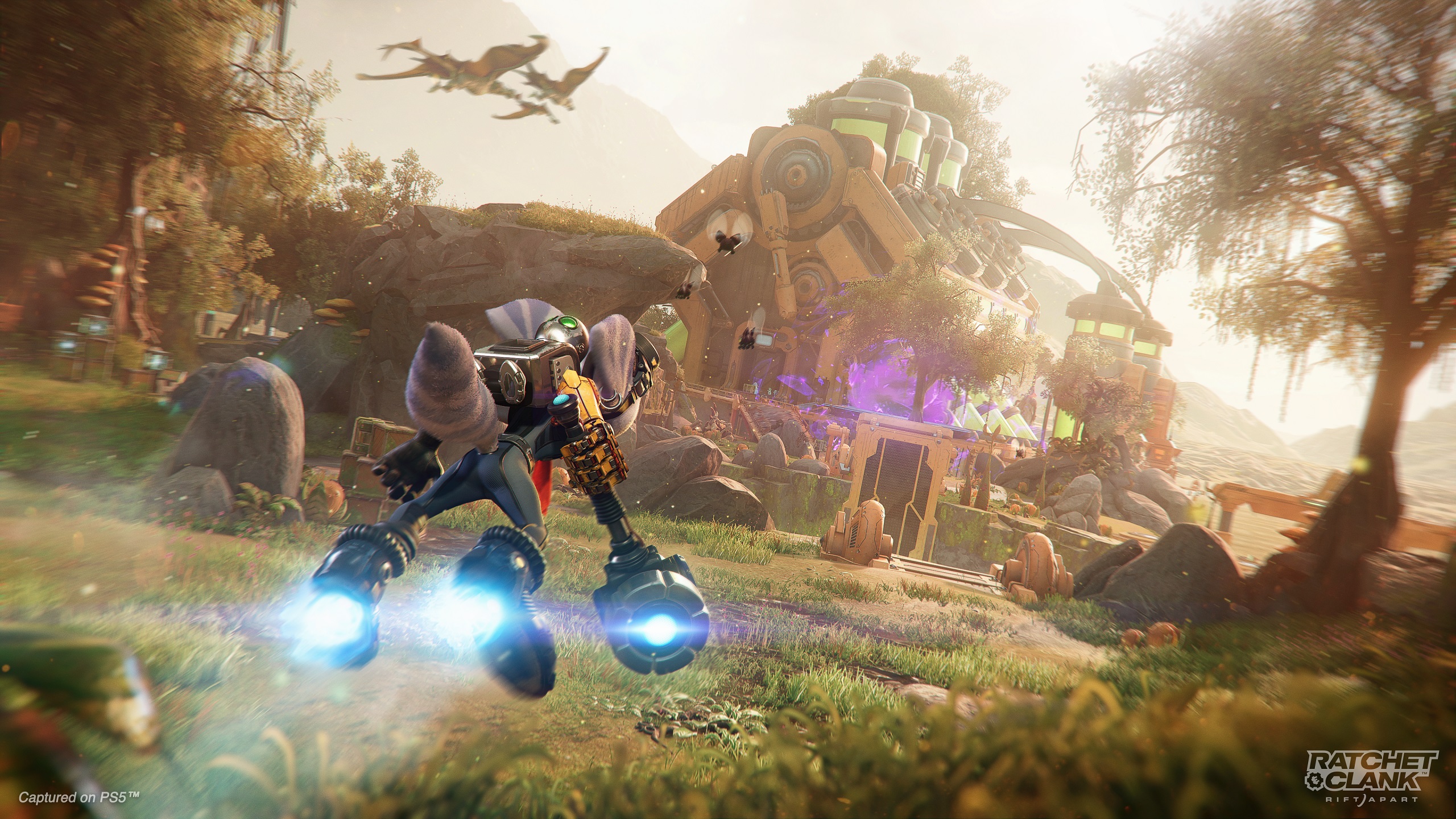
On the flipside, these issues were counteracted by some other massive technical positives I found with the game. I initially played the game using the 30fps fidelity mode, but after swapping to the 60fps Performance RT mode I never looked back. There was no particularly noticeable lose of effects or fidelity to me, but the frame rate was basically rock solid and felt absolutely incredible in practice. Load times were also effectively non-existent, with the closest being animations of your ship taking off and landing on new planets. The Dualsense’s adaptive triggers were also used to perfection, allowing for primary and secondary options on weapons, such as the Burst Pistol’s half pull being a single shot and full pull being auto-fire, the Drillhound’s half-pull targeting enemies and full pull firing the gun and many more. It greatly enhanced the experience and once again reminded me of just how good the Dualsense haptics are when used well.
Finally, I want to call out the massive number of accessibility option that are available in the game. There’s combat assists, like shifting gunfire to be a toggle rather than holding the trigger to continue firing, aim assist, lock on and more. In traversal options, there’s the ability to auto-glide, have the Hoverboots auto-pump to reach max speed, ledge-guards to stop your inadvertently falling off off-screen ledges and more. There’s also plenty of shared and contrast options to improve visibility of specific elements, while the subtitle options actually give you a visual example in-menu of how things are changing (which is something a lot more games need to do). My personal favourite options, however, is the ability to trigger game slowdown options via d-pad shortcuts. If you need extra time in combat to better allow for reaction time, you’re able to cut the game speed to 75%, 50% or 25% at the push of a button, which I absolutely love as an option for those who want or need it.
Ratchet & Clank: Rift Apart is an absolutely fantastic experience, no matter how you look at it. It looks amazing both technically and artistically, the story and characters are interesting and well written, the mechanics are engaging and useful, the planets are well designed and exploration is heavily rewarded. Regardless of if you’ve played a game in the franchise or not, Ratchet & Clank: Rift Apart is an absolute must-have game on PlayStation 5.
Ratchet & Clank: Rift Apart was reviewed on PlayStation 5, with a review copy provided by the publisher. For more information, check the official website.
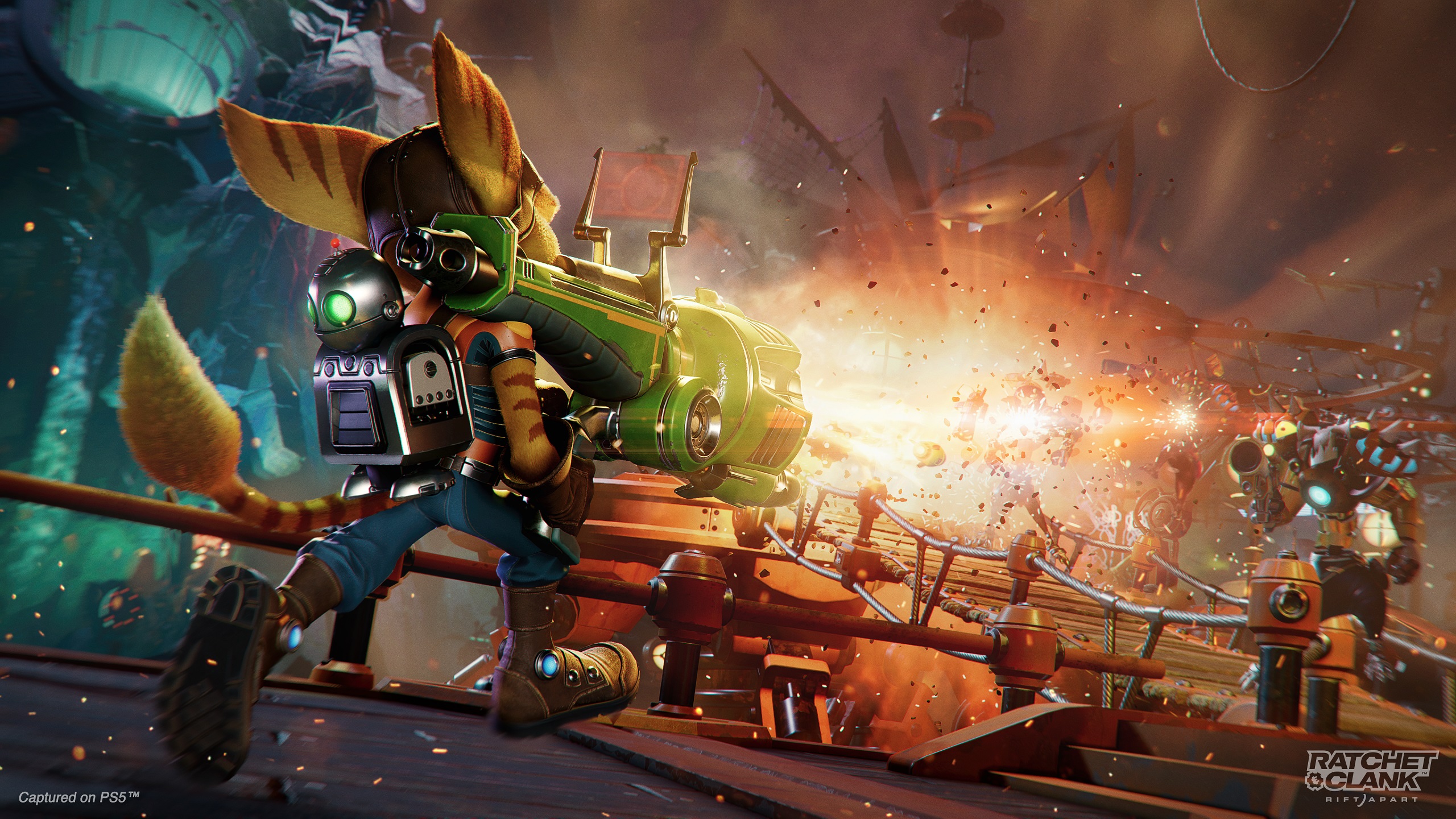
- Game looks absolutely gorgeous - Story and characters are well written and engaging - New movement mechanics feel great - Plenty of interesting weapons - Heaps of accessibility options
- Occasionally glitchy


